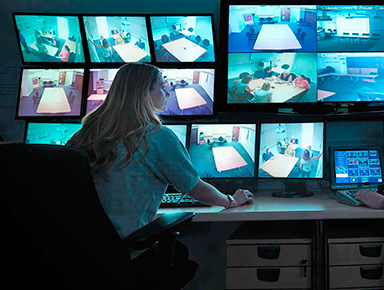Physical security is a crucial component of an organization’s overall security posture, providing the first line of defense against threats to people, assets, and property. However, traditional physical security programs and technologies are becoming less effective at detecting and responding to evolving threats. This report emphasizes the need for organizations to optimize their physical security frameworks and adopt a holistic approach that integrates physical and cyber security measures. It highlights the importance of security convergence, training and awareness, collaboration with stakeholders, and the evaluation of physical security landscape in 2024 to enhance resilience against risks and threats.
According to the consulting firm Deloitte, organizations face growing threats to their physical security, with incidents projected to increase in 2022 and beyond. The shift to hybrid work models, coupled with outdated technologies and neglected security programs, further exposes organizations to physical and cyber security breaches. Therefore, it is imperative for organizations to reassess their physical security programs to address emerging risks and protect assets in both traditional and remote work environments.
The COVID-19 pandemic necessitated the adoption of decentralized or hybrid remote work solutions, leading to an increased focus on extending physical security measures into private realms, such as employees’ homes. The rise in cyber security breaches involving a human element highlights the need to address physical security vulnerabilities to mitigate insider threats and breaches. A cyber-converged physical security program is essential for minimizing cyber security risks and protecting organizational assets.
As threats against organizations continue to rise, it is crucial to embrace security convergence, robust training and awareness programs, and collaboration among stakeholders. Security convergence encompasses a holistic approach that integrates physical, personnel, and cyber security measures. It requires fostering a security-minded culture, recognizing that security is everyone’s responsibility, and upholding user privacy as a fiduciary duty. Training, education, and awareness programs should be ongoing to create a security-first culture and ensure preparedness for real-time incident response.
Collaboration and integration of data between physical security software and other stakeholder groups, such as HR, finance, privacy, legal, cyber security, business continuity, risk, and crisis management, enhance the effectiveness of physical security programs. Leveraging technology and program digitalization can trigger real-time event-to-action alerts and notifications, improving incident response capabilities.
he Way Forward:
To improve physical security, organizations should conduct a thorough assessment of their current programs and technology. This assessment should address key questions related to program mandates, awareness levels, engagement with physical security in new business initiatives, technology capabilities, KPIs/KRIs, integration with stakeholder groups, and compliance with regulatory requirements and standards. The answers to these questions will help identify program gaps, vulnerabilities, and priorities for improvement.
By gaining insight into their physical security programs, organizations can enhance their posture and better prepare, prevent, and respond to incidents. A comprehensive evaluation of strengths, weaknesses, and vulnerabilities will serve as a foundation for proactive measures that align with the evolving threat landscape. Ultimately, organizations can create a resilient environment that safeguards people, assets, and property..

Nulla rhoncus, elit bibendum elementum fermentum, lectus dolor aliquet lectus, sed scelerisque lectus nunc vitae leo. Suspendisse egestas purus nisi, et bibendum lacus faucibus dignissim. Suspendisse potenti.Ut in elementum odio. Phasellus vehicula nisl dui.
Suspendisse egestas purus nisi, et bibendum lacus faucibus dignissim. Suspendisse potenti.Ut in elementum odio. Phasellus vehicula nisl dui. Thanks !!!